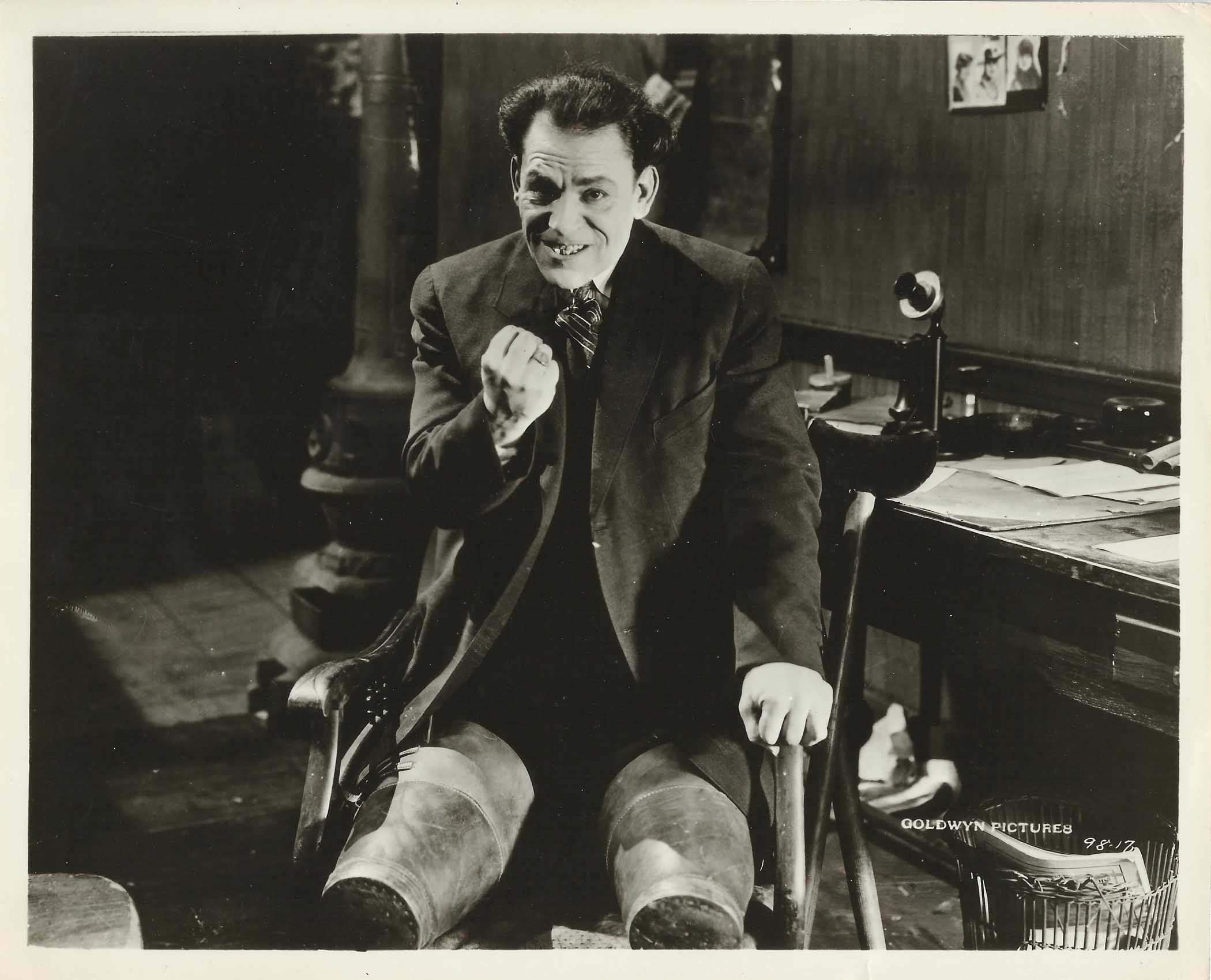Nearly scraping the bottom of the barrel for 1920, I uncovered a Lon Chaney film that is rarely – if ever – discussed. And it should be because it harbors one of Chaney’s finest performances without any need for extensive (possibly racist) makeup or one-note characters. In Wallace Worsley’s The Penalty, Chaney stars as a man who – at a young age – had his legs wrongfully amputated by an amateur doctor and has lived his whole life with a Napoleonic rage, thriving in the seedy underbelly of San Francisco, while hoping to exact revenge on the doctor – who has now become a widely renowned surgeon – some twenty odd years later.
I can say with certainty that this film must have been one hell of a sales pitch back in the early 1920s:
“Well, Lon Chaney’s pretty ugly. And available!”
“Perfect!”
It’s certainly a weird and twisted idea for 1920 – probably not so much nowadays as convoluted plots about troubled weirdos as psychotic masterminds is kind of a niche category all of its own these days. But for 1920, this film was probably ahead of its time. Not in terms of style or technique or even acting, but due to its content. However, that doesn’t mean it’s a weak film because it’s not right for its time, in fact it only makes the film stronger that it can stand apart from the rest of its era so well. My one problem is that the film offers an ending that seems to come completely out of nowhere, almost as if a studio had dipped their grimy fingers into the cesspool of script fuck-uppery and drizzled it over the last ten-fifteen pages of the script. That’s probably a bit harsh, and the ending really isn’t bad as much as it could potentially be divisive, but it still doesn’t feel like it was the way the director or writer really wanted it to go. Maybe you – whoever reads these – can be the judge of that, but for now, it was a big factor in the drastic change in personal feeling I had toward this film.
That being said, the one aspect that was relentlessly commendable, even throughout the wishy-washy ending, is Lon Chaney’s commanding performance. Never mind the fact that the man literally bound his legs at the knees as tightly as he could to give off the effect that he had no legs (ahh, the days of no computer-generated imagery… You can hear Lt. Dan laughing from here), he still managed to offer an incredibly nuanced performance of a troubled, yet misunderstood individual even through the bouts of pain. From what I’ve seen of Chaney so far, he’s been a very over-the-top and generally typecast actor. Either he’s playing a makeup-heavy freak in a horror picture, or a cunning and vile thug/ evil-doer, and while he plays both the freak and evil-doer here, he hardly plays them to the same effect he has in other films. Here, the film rests solely on his shoulders and he can both frighten and cause you to empathize with in the same scene, perfectly capturing the psyche of this eccentric madman without overplaying him to a level of ridiculous he’s often known to do.
Thankfully, director Wallace Worsley helps to capture the persona of the character as well by lingering on scenes and building up tension in scenes just long enough to let the emotions play out naturally. There aren’t any loud, melodramatic scenes that aren’t thrown in just because it’s the 1920s; they’re given credibility and are respectfully tied into the characters’ personalities. The script, for about three-quarters of the film, offers a unique and fully-developed perspective on these types of characters as well – something that films of today could learn a lesson or two from. Even despite how it ends, it’s still a film well worth checking out – if, at the very least, because of Lon Chaney. I doubt there are many performances of his better than this, and it’s certainly the best male performance I’ve seen from the decade (but I also haven’t seen many yet). Sometimes you just have to look in the hidden areas to find small gems like this. I know that I wouldn’t have even thought twice about watching this film if it hadn’t been for my favorite film of the year, Monastery of Sendomir, changing my opinion about how even the small films of nearly a century ago can still hold weight with the big dogs of its time and even today. Hopefully Chaney’s performance does the same.
.webm/330px-seek%3D6-The_Penalty_(1920).webm.jpg)



No comments:
Post a Comment